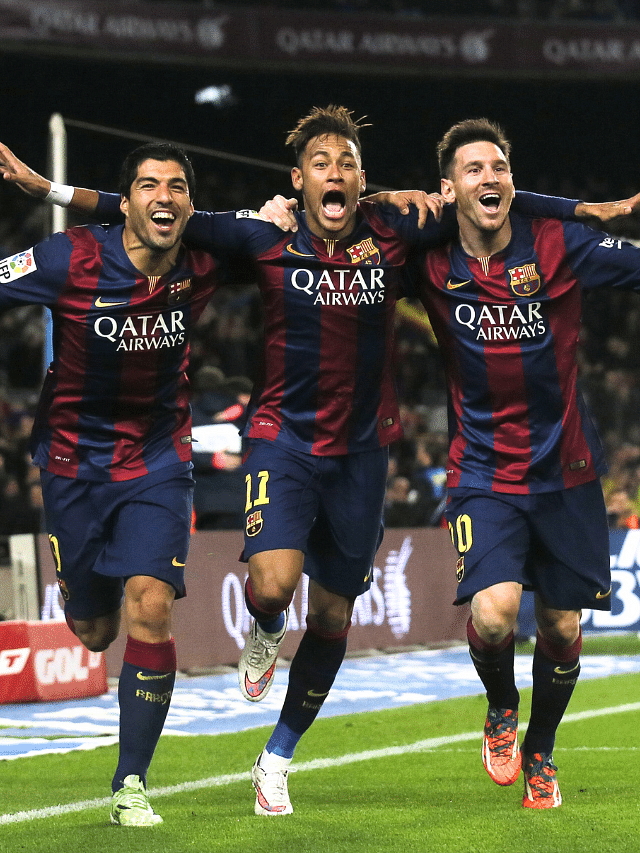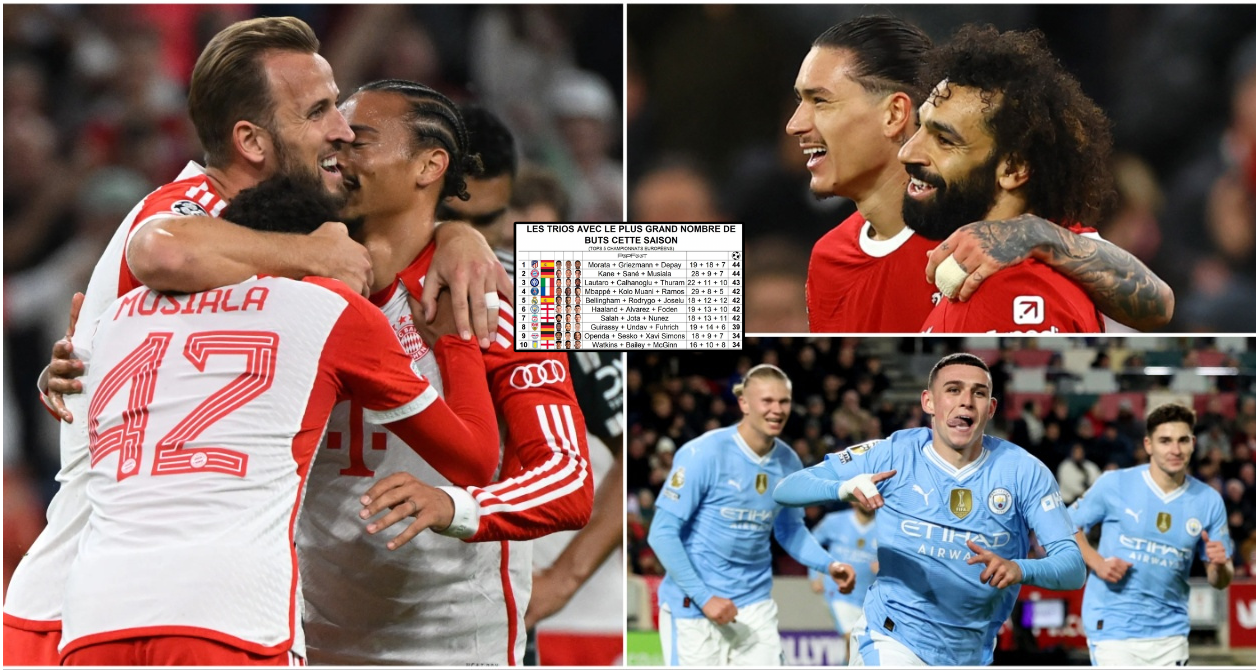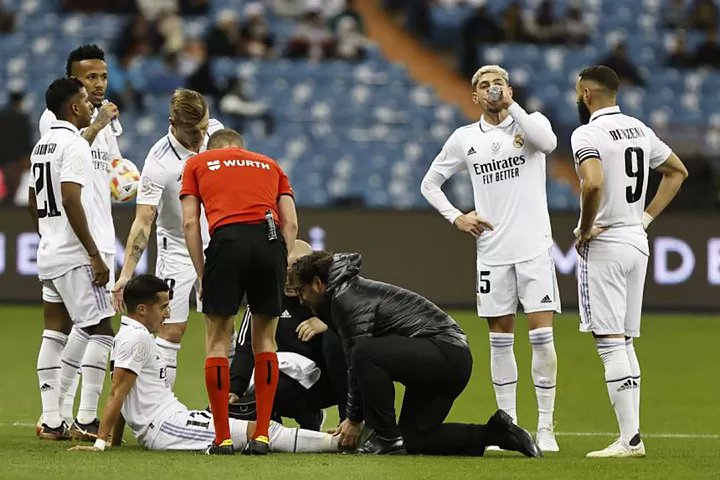
UCL’s Unstoppable Frontlines: A Deep Dive into Europe’s Top Attacking Trios
The UEFA Champions League, football’s premier club competition, is a stage where legends are forged and history is written. While individual brilliance often steals the headlines, it is the collective synergy of an attacking trio that frequently defines an era, turning formidable teams into unstoppable forces. These trios, each with their unique blend of pace, power, precision, and telepathic understanding, have not only delivered silverware but have also redefined what is possible in modern football. Their shared goal-scoring prowess, combined with a selfless pursuit of victory, leaves an indelible mark on the tournament’s rich tapestry.
From the relentless pressing machines to the flamboyant artists, the UCL has witnessed a succession of attacking partnerships that have terrorized defenses across Europe. This article delves into some of the most iconic and effective attacking trios that have graced the Champions League, exploring their dynamics, their defining moments, and their lasting legacy.
1. The MSN: Messi, Suarez, Neymar (Barcelona – 2014-2017)
Perhaps the most universally acclaimed attacking trio in football history, Barcelona’s "MSN" represented the pinnacle of individual brilliance coalescing into collective genius. Lionel Messi, Luis Suarez, and Neymar Jr. formed a trident that redefined goalscoring and offensive fluidity between 2014 and 2017.
- Lionel Messi: The undisputed maestro, operating as a false nine or right-winger, Messi was the architect, the creator, and the primary finisher. His unparalleled dribbling, vision, and clinical finishing made him virtually unplayable.
- Luis Suarez: The quintessential number nine, Suarez brought aggression, intelligent movement, and a relentless predatory instinct. His hold-up play, link-up with Messi, and ability to score from almost any position made him the perfect spearhead.
- Neymar Jr.: The Brazilian wizard on the left flank, Neymar added flair, blistering pace, and dazzling dribbling skills. His ability to beat defenders one-on-one, combined with his goal-scoring threat and selfless assists, completed the triumvirate.
Their Synergy: What made MSN truly special was their unselfishness and telepathic understanding. They were willing to sacrifice individual glory for the team’s benefit, constantly interchanging positions, creating space for one another, and finding each other with seemingly impossible passes. Their chemistry was so profound that they often seemed to know where the other would be without even looking.
UCL Impact: Their zenith came in the 2014-15 season, where they led Barcelona to a historic treble, culminating in a Champions League final victory over Juventus. In that season alone, the trio scored an astonishing 122 goals across all competitions, with 27 of those coming in the Champions League. They combined for countless memorable moments, including the stunning counter-attacking goals, intricate passing sequences, and individual moments of brilliance that left opponents bewildered. Their departure marked the end of an era, but their legacy as arguably the greatest attacking trio remains unchallenged.
2. The BBC: Bale, Benzema, Cristiano Ronaldo (Real Madrid – 2013-2018)
In direct response to Barcelona’s brilliance, Real Madrid forged their own formidable trident: Gareth Bale, Karim Benzema, and Cristiano Ronaldo – affectionately known as "BBC." This trio embodied power, pace, and an almost ruthless efficiency in front of goal, particularly on the counter-attack.
- Cristiano Ronaldo: The spearhead and primary goalscorer, Ronaldo was a phenomenon. His aerial prowess, thunderous long-range shots, and clinical finishing made him the ultimate goal machine. He thrived on breaking records and delivering in the biggest moments.
- Karim Benzema: Often the unsung hero, Benzema was the intelligent link-up man and a master of creating space. His selfless movement, exquisite first touch, and ability to drop deep to facilitate play allowed Ronaldo and Bale to flourish. He was the perfect foil, an intelligent nine who could also finish.
- Gareth Bale: The Welsh winger brought blistering pace, incredible power, and a penchant for scoring spectacular goals, especially in crucial matches. His ability to stretch defenses and his powerful left foot made him a constant threat from the right flank.
Their Synergy: Unlike MSN’s intricate passing, BBC’s strength lay in their directness and devastating counter-attacks. Ronaldo’s insatiable hunger for goals, Benzema’s intelligent build-up play, and Bale’s explosive bursts made them a nightmare for any defense. They were a more vertical, direct threat, often overwhelming opponents with sheer athleticism and precision.
UCL Impact: The BBC era coincided with Real Madrid’s unprecedented dominance in the Champions League, securing four titles in five years between 2014 and 2018. They collectively scored an incredible number of goals, with Ronaldo consistently leading the scoring charts. Memorable moments include Bale’s winning goal in the 2014 final, his sensational overhead kick in the 2018 final, and countless decisive goals from Ronaldo in crunch knockout ties. Their reign of terror in Europe cemented their place as one of the most successful attacking trios in history.
3. Salah, Firmino, Mané (Liverpool – 2017-2022)
Under Jürgen Klopp, Liverpool crafted an attacking trident that epitomized modern football’s high-pressing, fluid attacking philosophy. Mohamed Salah, Roberto Firmino, and Sadio Mané formed a relentless, energetic, and incredibly effective front three that propelled Liverpool to European glory.
- Mohamed Salah: Operating primarily from the right wing, Salah was the prolific goalscorer, known for his blistering pace, clinical left foot, and ability to cut inside and unleash powerful shots. He quickly became the team’s talisman.
- Roberto Firmino: The unique "false nine," Firmino was the glue that held the attack together. His relentless pressing, intelligent movement, link-up play, and selfless creation of space for Salah and Mané were crucial to their success. He was the system’s brain.
- Sadio Mané: On the left flank, Mané provided explosive pace, direct dribbling, and a keen eye for goal. His relentless work rate, ability to beat defenders, and knack for scoring crucial goals made him a constant menace.
Their Synergy: This trio was built on tireless work rate, intelligent off-the-ball movement, and an almost telepathic understanding. Firmino’s ability to drop deep created space for Salah and Mané to run into, while all three were relentless in their pressing, suffocating opponents and winning the ball high up the pitch. Their fluid interchange of positions made them incredibly difficult to mark.
UCL Impact: Their impact was immediate and profound. They reached the Champions League final in 2018, only to lose to Real Madrid, but returned stronger in 2019, winning the coveted trophy against Tottenham. Their goals and relentless energy were central to Liverpool’s European success and their subsequent Premier League title. The "Egyptian King," the "Brazilian Bobby," and the "Senegalese Speedster" etched their names into Anfield folklore.
4. Cole, Yorke, Sheringham/Solskjaer (Manchester United – 1998-1999)
Stepping back in time, Manchester United’s attacking options during their historic 1998-99 Treble-winning season showcased a different kind of attacking power: depth, versatility, and an uncanny ability to score crucial goals. While not always starting together, the combination of Andy Cole and Dwight Yorke, complemented by the super-sub prowess of Teddy Sheringham and Ole Gunnar Solskjaer, was truly formidable.
- Andy Cole & Dwight Yorke: The primary striking partnership, Cole and Yorke developed a telepathic understanding. Their intelligent movement, unselfish link-up play, and clinical finishing made them a nightmare for defenders. They knew instinctively where the other would be.
- Teddy Sheringham & Ole Gunnar Solskjaer: The ultimate impact substitutes. Sheringham’s experience, composure, and ability to hold up play and finish, combined with Solskjaer’s "baby-faced assassin" instincts for poaching goals, provided an unparalleled threat from the bench.
Their Synergy: What made this group so potent was the blend of styles and the depth. Cole and Yorke were a fluid, unselfish pairing, while Sheringham offered a more cerebral presence and Solskjaer raw finishing instinct. Sir Alex Ferguson could change the dynamic of the game simply by introducing fresh legs from this elite quartet, often with devastating effect.
UCL Impact: Their collective contribution was instrumental in United’s Champions League triumph in 1999. From Cole and Yorke’s prolific partnership throughout the group stages and knockout rounds to Sheringham and Solskjaer’s dramatic stoppage-time goals in the final against Bayern Munich, their attacking prowess defined the team’s never-say-die attitude. Their combined efforts throughout the season embodied the spirit of a truly great attacking unit.
5. Lewandowski, Gnabry, Coman/Müller (Bayern Munich – 2019-2021)
Bayern Munich’s dominant run to the 2020 Champions League title was spearheaded by a relentless attacking unit, with Robert Lewandowski at its core, expertly supported by the pace and directness of Serge Gnabry and Kingsley Coman, and the unique intelligence of Thomas Müller.
- Robert Lewandowski: The quintessential modern striker, Lewandowski was the undisputed focal point and a prolific goal machine. His intelligent movement, aerial ability, and clinical finishing made him one of the most complete forwards in the world.
- Serge Gnabry: A powerful and pacy winger, Gnabry provided direct runs, powerful shots, and excellent finishing from the right flank. He was a constant goal threat.
- Kingsley Coman: On the left, Coman offered blistering speed, exceptional dribbling, and the ability to beat defenders to create chances. His winning goal in the 2020 final against PSG was a testament to his big-game ability.
- Thomas Müller: The "Raumdeuter" (space interpreter), Müller’s unique positioning, intelligent runs, and ability to find pockets of space between the lines made him an invaluable asset, linking play and creating chances for the others.
Their Synergy: This Bayern attack combined Lewandowski’s world-class finishing with the explosive pace and dribbling of Gnabry and Coman on the wings. Müller’s unconventional movement and tactical intelligence added another layer, ensuring the attack was always fluid and unpredictable. Their high-pressing system also ensured they won the ball back quickly, leading to rapid transitions and numerous goal-scoring opportunities.
UCL Impact: The 2019-20 Champions League campaign was a masterclass in attacking football. Lewandowski broke records, scoring in every game leading up to the final, while Gnabry had a breakout season with crucial goals in the knockout stages. Their 8-2 demolition of Barcelona in the quarter-finals, where all four players contributed heavily, remains a vivid demonstration of their devastating power. They were an unstoppable force, combining individual brilliance with a cohesive tactical approach.
The Art of the Trio: What Makes Them Great?
Beyond the individual talents, several factors contribute to the formation of a truly great attacking trio:
- Complementary Skill Sets: The most successful trios rarely feature three identical players. Instead, they boast a mix of goalscorers, creators, facilitators, and workhorses. One might be a pure finisher, another a dazzling dribbler, and the third an intelligent link-up player.
- Telepathic Understanding: This is perhaps the most crucial element. Great trios anticipate each other’s runs, passes, and movements without needing to communicate verbally. This comes from countless hours on the training ground and an innate understanding of each other’s game.
- Unselfishness: While individual goal tallies are important, the willingness to assist, to track back, to create space for a teammate, and to celebrate each other’s successes is paramount. The ego is subsumed by the collective goal.
- Tactical Adaptability: The best trios can operate in different systems or adapt their roles within a game, making them harder to nullify.
- The Coach’s Vision: A great coach is essential in identifying the right players, fostering their chemistry, and designing a system that maximizes their collective potential.
Conclusion
The UEFA Champions League is more than just a competition; it’s a theatre of dreams where attacking trios have consistently stolen the show. From the unprecedented goal tallies of MSN and BBC to the relentless pressing of Liverpool’s front three, the tactical ingenuity of Manchester United’s diverse attack, and the clinical efficiency of Bayern Munich’s machine, these partnerships have transcended mere individual talent. They represent the pinnacle of footballing synergy, embodying the beauty of collective brilliance.
As football continues to evolve, new attacking talents will emerge, and new combinations will be forged. Yet, the legacy of these iconic trios will endure, serving as a timeless reminder of the power of unity, understanding, and relentless pursuit of goals on European football’s grandest stage. They are not just names on a team sheet; they are chapters in the storied history of the Champions League, forever etched in the memories of fans worldwide.


